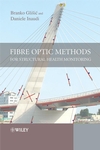
Roctest launches SHMLive structural health monitoring solution to improve the safety of major public and private infrastructure. Real-time monitoring service will alert owners of structural risks and enable them to deploy resources where they are most needed.
Roctest Ltd (“Roctest”) (TSX: RTT), a leading designer and manufacturer of high-precision sensors for the civil engineering market, today announced the launch of SHMLive, a new and innovative web-based solution to monitor the health and status of infrastructure projects. Offered as a complete turnkey solution for a fixed monthly fee, SHMLive can save both up front capital costs and ongoing maintenance and repair costs for the owners of bridges, tunnels, high rise buildings and other infrastructure.
“SHMLive offers a choice that has not previously been available in the marketplace,” said François Cordeau, President and CEO, Roctest. “Traditionally, infrastructure owners have had to pay the full cost of a monitoring system at the outset, and then concern themselves with managing and interpreting the endless flow of data generated. With SHMLive, they can achieve superior monitoring capability and ease of adoption, with more predictable impact on their budgets."
SHMLive deployments will make use of the full range of available monitoring technologies. With more than 60 years of experience instrumenting complex structures worldwide, Roctest is the only company that can seamlessly integrate traditional vibrating wire instruments, fiber optic based sensors using five different technologies, concrete corrosion sensors, and any type of electrical sensors into a fully automated data acquisition system and integrated database while displaying the data in real-time anywhere in the world through its secure web site
www.shmlive.com .
SHMLive Description
SHMLive deployments will begin with Roctest working with the infrastructure owner to identify specific objectives and design a customized monitoring system. Roctest will then install, operate and maintain the system providing a guaranteed service level. All data will be automatically transferred to Roctest’s secure online database where the data will be displayed in real-time on the SHMLive secure web site. With the support of selected local engineering partners, warning and alert limits can then be used to trigger the agreed upon protocol. All the instruments and sensors currently offered by Roctest and its subsidiaries integrate seamlessly in the SHMLive solution, as do third party traditional electrical sensors.
SHMLive Benefits
A 2008 U.S. Department of Transportation report found that 24% of the nearly 600,000 U.S. bridges were structurally deficient or functionally obsolete. This classification is based on visual inspection only and cannot fully capture hidden structural defects or capacity reserves. To monitor these assets becomes an enormous task for any organization if one only considers the amount of data generated by the monitoring sensors. SHMLive will behave the same way as a regular house security system, providing an alert whenever unusual behaviour is detected. Being an exceptionbased system, SHMLive does not require an army of engineers to continuously monitor the data, allowing smaller organizations with less resource to finally provide surveillance of critical structures. The same benefits will apply in Europe and Asia where aging infrastructures are a fact of life. Roctest is partnering with certified engineering firms worldwide to provide value-added services; however, the owner can also select its preferred engineering firm to analyze its data and recommend actions.
By understanding the static and dynamic behaviour of a structure, the owner can set priorities for maintenance and repairs, resulting in improved safety for its users and, in many cases, safely extending the life of the infrastructure with limited or no interventions. For large organizations like Departments of Transportation (D.O.T.) in the U.S. responsible for thousands of structures, the ability to assess and extend the useful remaining life of a structure will result in positive Return on Investment (R.O.I.) by prioritising rehabilitation efforts and optimizing the associated maintenance budget.
In the case of a high-rise building, SHMLive will provide instantaneous feedback on its health following an earthquake. For aging underground infrastructures like parking lots and tunnels, SHMLive will detect, in real-time, minuscule movements indicative of more serious issues. For geotechnical applications, SHMLive will provide a simple and cost-effective means of distributing measurements and alerts to all stakeholders involved in a construction project.
By offering this service based for a monthly fixed fee, Roctest provides infrastructure owners an affordable way to monitor these assets compared with the large capital expenditure that has historically been required, resulting in additional flexibility for owners to monitor more structures.
“Roctest will also continue to offer its complete portfolio of products in the same way we have for the last 60 years, targeting the large civil engineering projects and the continued surveillance of infrastructures by providing custom solutions using standard products. SHMLive will complement our offering by providing a value-added option to our customers who prefer a turnkey solution. The new service will be offered by all Roctest Group companies, including Roctest, Smartec and Telemac,” concluded Francois Cordeau.
.JPG)





